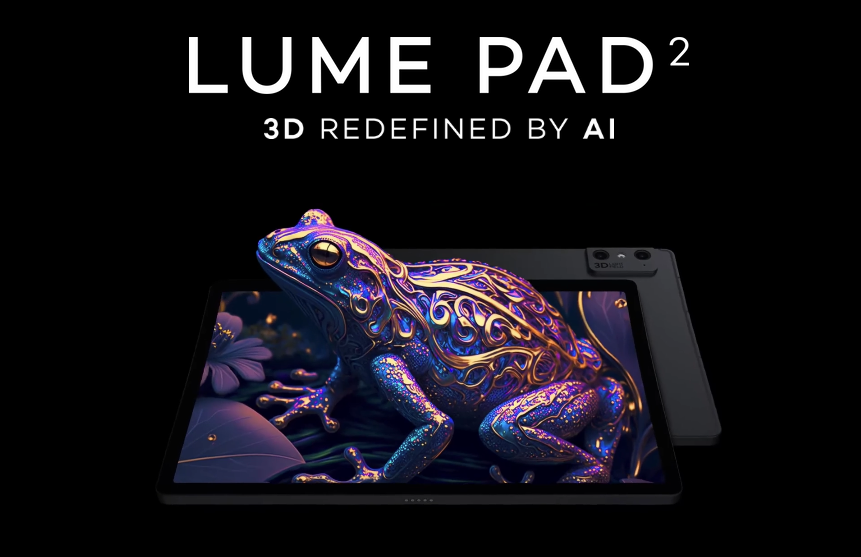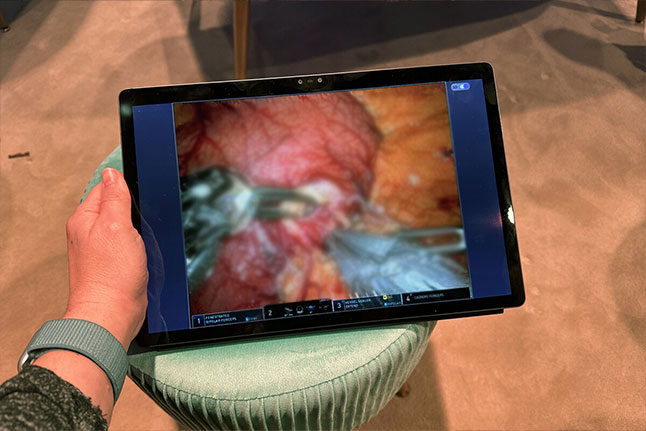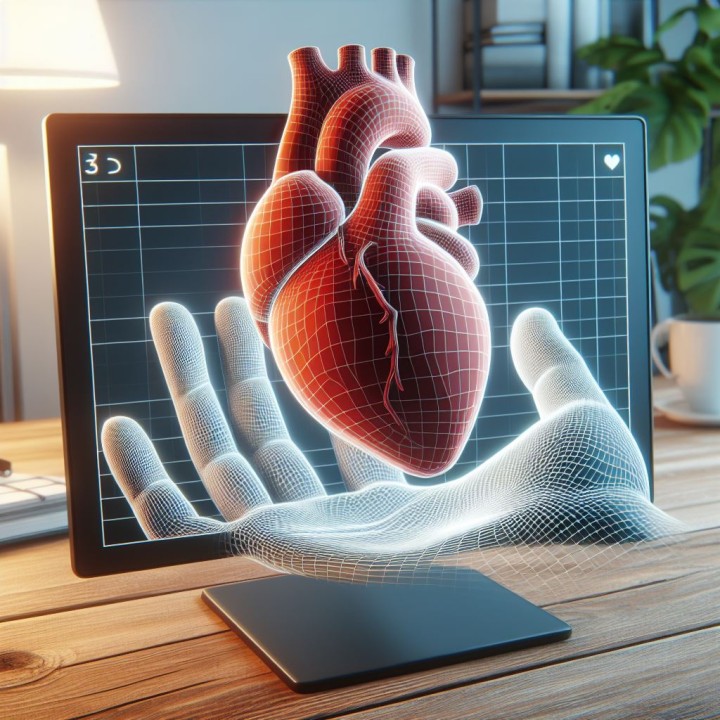Continuous technological advancements in the field of surgery aim to obtain medical equipment and surgical techniques to increase the precision and safety of interventions. Stereoscopic or 3D view Devices are primarily used in surgeries and procedures requiring minimal access or high precision, such as surgical robots, laparoscopes, endoscopes, surgical navigators, microscopes, and exoscopes, among others. These devices employ various technologies for 3D visualization and accurate recreation of the sensation of depth. They commonly utilize special consoles or monitors and glasses that create the sensation of depth for the surgeon or personnel using them.
However, one major limitation of these devices is that 3D visualization is restricted to the medical staff in the operating room and even in many cases to the lead surgeon performing the intervention, leaving the rest of the participants in the surgery (assistants, support staff, students, etc.) without the 3D view experience, leaving only the option of conventional 2D monitors. Consequently, there is a loss of information, resulting in impaired assistance, learning, and proctoring tasks.
How did we discover Leia’s technology?
In 2023 our team attended the Mobile World Congress (MWC), among other things we had the opportunity to witness the launch of the new 3D display tablets featuring Leia Inc.‘s technology.
The technology that enables viewing in 3D without using any type of glasses is based on the use of a Diffractive Light Field Backlighting (DLB) system between the screen and the typical backlight of the IPS panel. When viewing 3D content, light passes through the DLB layer, which generates the 3D effect. This, combined with the facial tracking system based on artificial intelligence, allows content to be viewed in 3D from different positions without the need for glasses. Thanks to the layered design of its screen, the device allows switching between 2D and 3D views, enabling it to display both traditional and stereoscopic content.
From the first contact at mSurgery, we understood the range of possibilities that the integration of these devices with our real-time collaborative surgery platform could offer.

mSurgery, 3D views, and Leia’s technology
mSurgery offers a technology that allows one to send from the operating room to anywhere in the world the stereoscopic video of any medical equipment that has this technology. The process consists of sending the necessary video sources and information from the operating room to our communication platform, to be downloaded by the clients and reconstructed according to the type of device, creating the same sensation of depth as the lead surgeon, all of this in real-time, without the need to install any application. Supported devices include various types of virtual reality glasses, smartphones in cardboard mode, and some special monitors.
With this innovative technology, we managed to provide a useful tool so that the operating room staff, residents, or medical students, no matter where they are, can see in real-time with the same sense of depth that the surgeon has, the intervention that is being performed at that moment.
Following our visit to MWC 2023 and in line with our roadmap, at the end of 2023, the development team began working to leverage Leia’s 3D technology by integrating it into the mSurgery platform. For integration testing, we selected the Lume Pad2 Tablet model.
This year 2024 mSurgery returned to MWC to present at the Telefónica booth the demonstration of a live collaborative surgery using our platform and the Intuitive‘s da Vinci surgical platform, with the participation of surgeons Jordi Tarascó Palomares, José M. Balibrea M.D. Ph.D. FACS and Pau Moreno. Taking advantage of the occasion, and after a year since we discovered Leia’s technology, mSurgery presented its new functionality of stereoscopic visualization of surgical interventions in real-time without the need to wear glasses or accessories, simply through a Tablet!

Conclusions
Thanks to the continuous innovation and integration of new technologies, the collaborative platform mSurgery offers functionalities that position it at the forefront of the sector. Following one of the latest efforts made by the team, mSurgery now offers the possibility to improve assistance services during the intervention, proctoring in complex cases, and even training new surgeons by expanding the information they have access to, both inside and outside the operating room, allowing them to share the view of the lead surgeon, including the sensation of depth, in a way as simple as using a Tablet.
